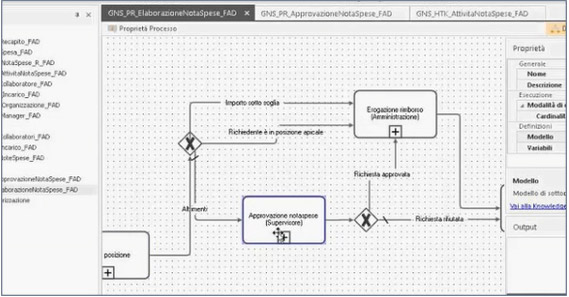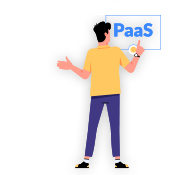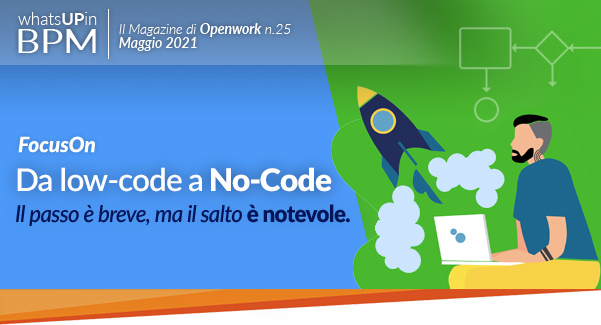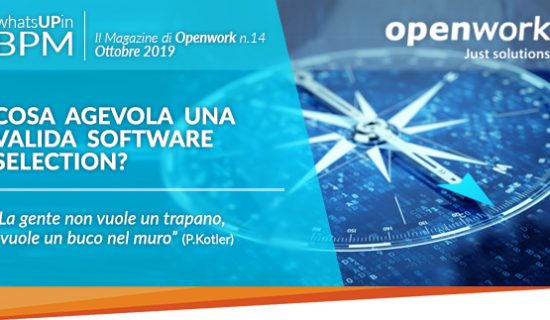
Editorial by:
Ivan Giuliani
Marketing & Digital Coordinator Openwork
Build your own software without a line of code
The changes of our time have originated a major acceleration of the needs of small, medium and large organizations, which, in order to stay ahead of the times, need cutting-edge technological solutions in line with the constant changes in the market in order to continue to grow and compete in contexts full of opportunities but also of new challenges in terms of digitization.
Hence the need for companies to innovate and renew themselves with the help of software that can automate processes, speed up and monitor the exchange of information, improve collaboration and, more generally, optimize the productivity of individuals and the entire organization to follow a market that, by now, travels at the speed of light.
A need that was initially latent but with the advent of the pandemic has been increasingly perceived, especially at the enterprise level; however, accelerating software and application development requires high-level profiles, rather long as well as onerous technical timeframes, and-if you will-also a good dose of luck in finding resources with not inconsiderable know-how to accomplish business objectives in the shortest possible time.
Not an easy mission since, in the Italian case, "Half of our companies complain of a digital skills gap in the market [...]" says Paola Generali, president of Assintel (National Association of ICT Enterprises); a statement that does not make a wrinkle in the face even of the recent report of the EU Court of Auditors presented in February 2021 in which Italy stands out negatively in terms of digital skills, holding the fifth last position compared to other European countries.
So IT figures are in short supply, and although we are still far from bridging this gap to come to our aid are precisely the new digital technologies that allow organizations that lack trained resources to be able to independently create professional applications for business management; we are talking about the technologies offered by No-Code (no-code) application development platforms that, unlike Low-code (little-code) ones, allow the creation of software applications without the need to know programming languages.
An innovative approach to the development of business applications that obviously saves considerable time, as well as reducing risks and headaches through the use of visual languages and conceptual models in place of typical programming codes, allowing any resource in the company to be able to create, quickly and without the support of programmers, professional software applications by means of a "design" to which rules of behavior are associated.
Example of modeling a business process with Jamio, the No-Code platform

Using graphical tools instead of programming languages means mitigating the problem of digital skills and putting a resource in a position to become a designer who can, in effect, design business software exactly as it is envisioned in his or her head (language of business), without having to worry about looking for outside professionals or companies to turn an idea into an application solution.
Several benefits enabled by the No-Code platform:
1) Ease of use
The absence of code allows even non-programmers to be able to create business applications, just like WordPress (one of the most widely used CMSs in the world), which allows users to create sites without knowing web development languages.
2) Ready solutions in a few days
Rapid development makes it possible to obtain software applications that can be used in one's own organization with a transition from idea to solution that, depending on the case, can be achieved even in a few days and not in several months as in traditional approaches.
3) Flexibility
The model-driven approach allows the designer to be able to modify the applications created very easily, therefore, to adapt them quickly to any organizational changes. So, the applications created evolve along with the business.
4) Affordable Costs
Commissioning a project involves significant costs and long development time; having a No-Code platform in house saves time and investment, but more importantly, allows you to create an unlimited number of applications at the same cost.
5) Independence
Allowing an organization to create its own business applications independently frees it from software companies, with benefits on cost and project time. It also allows them to be able to govern needs related to any emergencies that require extraordinary interventions with great speed.
6) Rapid prototyping
The modeling tools of No-Code platforms enable companies to rapidly prototype a business process before proceeding to the actual development of the solution; in this way it is possible to understand well in advance aspects that, in other contexts, would emerge only at the end of developments with all the inconveniences involved with great benefit on the reduction of implementation risks.
Also reinforcing these theses is the forecast revealed by Forrester for 2021 about software development, which, according to the research firm, will be 75 percent the work of low-code/No-Code platforms stating, further, that "Companies that have adopted low/no-code platforms, digital process automation, and collaborative work management have responded more quickly and effectively than companies that rely solely on traditional development."
In the common imagination it is the Americans who are the leaders in the software industry, however, Italy is also doing its part through a No-Code platform that can perfectly meet the aforementioned benefits and compete with the big players worldwide: it is Jamio openwork.
Jamio is an application development platform, 100% Italian, that allows to create applications for the management of business processes without using programming code and to benefit, in addition, from the Microsoft Azure cloud, an environment in which it is possible to publish the applications created - in total security - and to make them immediately available to the entire organization.
Thanks to this No-Code platform, it is possible to very quickly create and model a multitude of solutions, to define rules of behavior and to adapt them from time to time to new needs, intervening only at the necessary points through the modeling tools made available by Jamio.
A breakthrough that of the No-Code platform that, on the one hand, allows people to build their own software in house (at the same cost and with no usage limits), and on the other hand, allows them to make the most of their internal resources, saving additional money that, perhaps, could be invested in other prestigious projects for the company's growth.
Finally, there is to consider the benefits related to business development as well as to the future of the enterprise: a platform such as Jamio enables the company to rapidly digitize business processes with all the relevant advantages, among them the possibility of arriving before others in the market with performing services that, by increasing customer satisfaction, lead to improved business as well.

Editorial by:
Ivan Giuliani
Marketing & Digital Coordinator Openwork
Jamio HARP 4.6 R3 - What's new in the new Jamio release.

Exciting new features, both for Jamio designers and system integrators; plus, the introduction of some document automation features and further enhancements from a User Experince perspective.
jBIZ | Business Digitalization according to Jamio
Employing Surveys in Business Processes

A survey, or survey, aims to gather information through a questionnaire to discover/investigate the habits, needs, opinions, and requirements of a sample of individuals often outside the organizational context in which one is located.
Managing a survey involves three basic steps: preparation, execution, and analysis. Surveys can be conducted on market research, employee or customer satisfaction, marketing, health care, education, meeting and event organization, etc.
The ultimate goal of a survey is in most cases to make a decision and in some situations to follow up with precise actions based on the data collected.
Continue reading from PDF...
Openwork in the column "Puglia that goes."
The video of the TGR RAI PUGLIA television report
We were aired on RAI3 in the column "La Puglia che va," a space on TGR RAI PUGLIA dedicated to Apulian excellence that are standing out in the area by taking their offerings far beyond regional borders.
The RAI-produced report discusses Openwork and the technologies developed to help businesses automate business processes and quickly govern people, data, documents and events.
Plus, news and prospects for the future. Watch the report now.








